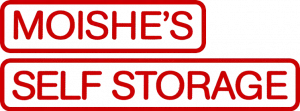Preparing for self storage is easy if you know what checklist to follow. Below we talk about 13 critical things to remember when preparing for mini storage. Take a look:
1. Consider sturdy moving boxes or plastic bins
Prepare for self storage by using the best boxes in your unit. Even though food and alcohol boxes are free, moving boxes are sturdier. It’s best to opt-in for sturdier boxes because as you move, they’re less likely to break.
Another — and better option — is to use plastic bins for your storage. Note, however, that plastic bins trap moisture, so ensure clothing and other items are completely dry before storing. Otherwise, these items may mold.
RELATED: How To Properly Prepare Clothes For Longterm Storage
2. Label what’s inside the boxes
When you pack 10, 30, 50, or even 100 boxes, it’s easy to forget what’s inside the boxes. So, to help with this, label the outside of the boxes so you know what’s inside. Whatever is easiest for you: a sticker, a color, or writing on the box. Keeping track of what’s inside the boxes will prevent the headache of a deep search in the unit later.
3. Consider weather elements
Units that are on the first level are most susceptible to weather-related problems. Extreme cold or heat can cause problems for electronics, fine clothing, autographed items, and art.
Water is another problem you have to watch out for. Puddles can form from water seeping up from the cement. Prepare your items for storage by putting down a plastic tarp to keep water from penetrating your boxes.
4. Safeguard against pests
Pests are a leading problem for self storage renters. Prepare your items for storage by using cedar balls to stop unwanted animals from making your stuff their home. Rodents, moths, and silverfish are the ones you have to watch out for. Mothballs are effective, but they can make your clothes smell bad, so it’s best to use cedar balls instead.
5. Remember insurance
Preparing for self storage starts with securing storage insurance so your items are covered if stolen or damaged. Generally, however, insurance companies won’t insure items valuing over $5,000. So, for these items, leave them at home or somewhere safe.
6. Take advantage of specials
Many storage facilities offer specials if you reserve with them. Preparing for self storage often means securing the best deal. If you plan to store six or more months, you can usually snag a good deal.
7. Clean items before storage
Preparing your furniture for storage means cleaning it before going into the unit. Cleaning items before self storage is a very important part of the storage process because if not prepared properly, items can become moldy or damaged from dirt. Clean items with a mild soap and water solution before moving into a storage unit.
8. Disassemble large items

In the same breath as cleaning your furniture for self storage, it’s also good to disassemble large items before going into storage. The less bulky the items are, the easier it is to organize. Open space in a storage unit is like throwing away money. Use as much storage space as you can and get the most bang for your buck.
RELATED: Storing Your Furniture Like A Pro
9. Get the right packing material
The right packing material protects your belongings for long term storage. Acid-free paper is the best packing material you can use. The ink from newspapers or magazines can bleed onto your items
10. Prep appliances
Preparing appliances for storage helps prevent damage, mildew, and musty smells. Here’s what you do:
- Thoroughly clean the appliance with a light soap and water solution
- Let appliance dry completely
- Place an open box of baking soda inside the appliance
- Remove any moving or fragile items from the appliance
- Tape the doors shut
- Cover the appliance with a sheet or tarp to protect it from damage and dust
- Move the appliance to its safe location for storage
11. Pack your storage unit strategically
Packing your storage unit strategically takes a keen eye because it requires preparation. If you’re planning to use your unit for months or years, it’s best to position items so it’s easy to navigate when you frequently visit it. Put the least-used items in the back and the most-used items in the front. Keep a running list of what’s in the unit on a clipboard so you can easily navigate the storage container.
12. Use height to your advantage
Use height to your advantage. Stacking items will save room and floor space. Most units are eight feet tall or taller. Think of your unit in terms of cubed feet, not just floor space. You can use height to your advantage, just don’t let it fall on you!
13. Know what’s NOT allowed in storage units
Storage units can’t hold everything you own. For starters, you can’t put anything living or flammable/combustible in your unit. For obvious reasons, these items can cause problems for you and the storage unit owner later down the road.
RELATED: Things NOT To Put In A Storage Unit And Why
Moishe’s Self Storage offers self storage for New York City residents. We hold wine, art, furniture, luggage, household items, or other things.
[button url=”https://www.moishesselfstorage.com/reserve-my-room/” text=”View Rooms for FREE” trailing_icon=”fas fa-arrow-right”]
We offer over 20 different storage unit sizes, available to individuals, students, and businesses at either of or storage facilities: Manhattan/The Bronx and Queens/Brooklyn
Reserve your room or view specials. We’ll pick up your things FREE!
